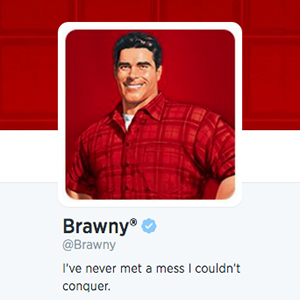Can You Use Native Advertising Without Being a Jerk?
 Native advertising. While Marissa Mayer may tout it as the next big way to sell things on the web, the concept itself is nothing new. Sponsors and product placement have been around since media itself. Soap operas, anyone?
Native advertising. While Marissa Mayer may tout it as the next big way to sell things on the web, the concept itself is nothing new. Sponsors and product placement have been around since media itself. Soap operas, anyone?
We’ve touched on native advertising before, and you’re probably familiar with its more obvious forms. This is the stuff you see in your Twitter feed that makes you say, “But I don’t remember following Brawny paper towels” right before you notice the “promoted” icon beside it. Then you continue on your merry, scroll-happy way, because you do not care about paper towels.
But — haha! — Brawny paper towels is in your head already, even if you’re not aware. And that might be all it takes at the store later this afternoon. That said, I did just look up Brawny’s Twitter feed, and … I like it. Or do I? How do you know I’m not getting paid to say this? (If only.)
 On the flip-side of innocuous paper towel tweets is another kind of native advertising that makes some folks, including John Oliver, a little uncomfortable. We’re talking about when businesses hawk their wares in a potentially deceitful way. These range from halfheartedly disclosed advertorials on Scientology to “news segments” about ailments that a sponsoring pharmaceutical company just happens to have a cure for.
On the flip-side of innocuous paper towel tweets is another kind of native advertising that makes some folks, including John Oliver, a little uncomfortable. We’re talking about when businesses hawk their wares in a potentially deceitful way. These range from halfheartedly disclosed advertorials on Scientology to “news segments” about ailments that a sponsoring pharmaceutical company just happens to have a cure for.
The reason this happens is because it pays. This is how the Buzzfeed empire was built: upon listicles about blue jeans, paid for by Express. Native advertising is why on HBO’s show Girls, Hannah’s editor requires that an interview with a famous older actress includes a reference to the medication Boniva. (Fictional example, but feasible.)
 So, does native advertising = jerk-face move? Only if you’re a jerk about it. If you’re a business, your money is probably much better spent on native ads than on, say, banner ads. (As John Oliver points out in his aforementioned piece, banner ads are only deliberately clicked 0.17% of the time. One could argue they serve more as billboards than as calls to action, but still, that is a low percentage.)
So, does native advertising = jerk-face move? Only if you’re a jerk about it. If you’re a business, your money is probably much better spent on native ads than on, say, banner ads. (As John Oliver points out in his aforementioned piece, banner ads are only deliberately clicked 0.17% of the time. One could argue they serve more as billboards than as calls to action, but still, that is a low percentage.)
Native advertising is a tool for businesses to sell more product and for publications to generate revenue. It’s cool that both sides win—so long as the consumer doesn’t lose. I advocate native advertising that is unobtrusive, cohesive with the medium’s aesthetic, and yet still clearly an ad. It is a fine and difficult line: It’s the difference between a sexy outfit and a trashy one. But unless you want your audience to think you are cheap and tacky, it’s a distinction you need to make. Because in the end, it’s all about your message.
For more posts by Kristen, click here!
Kristen Jackson – Editor



